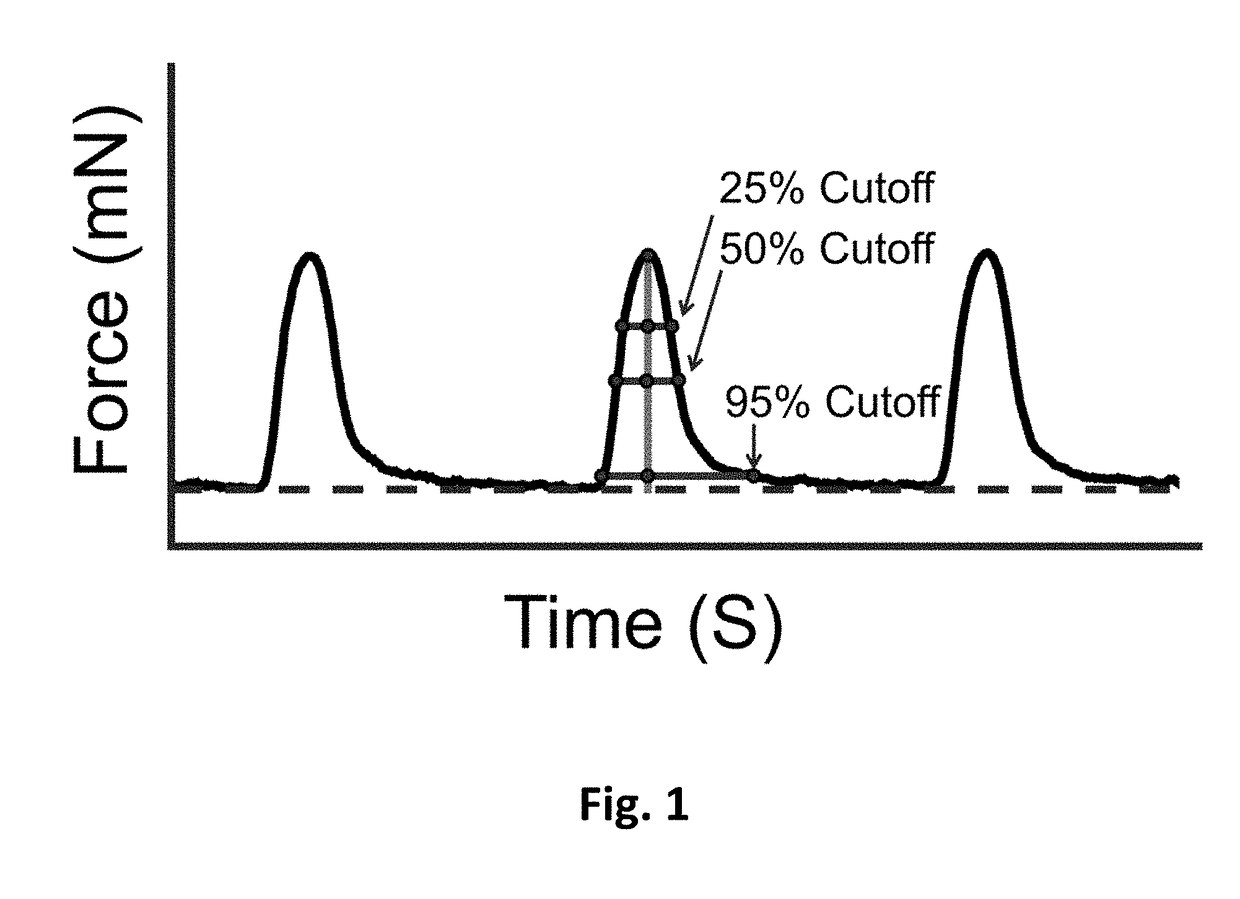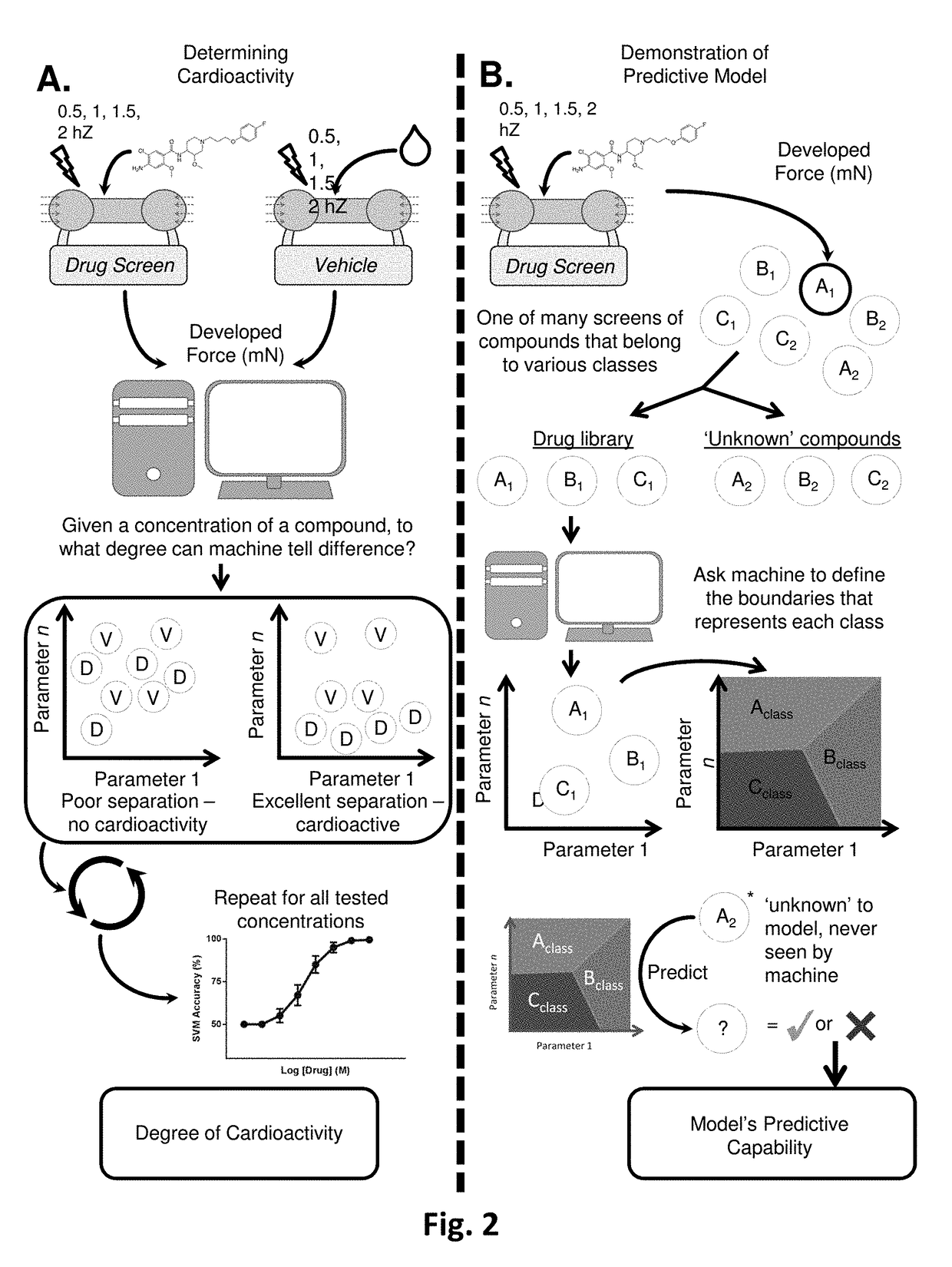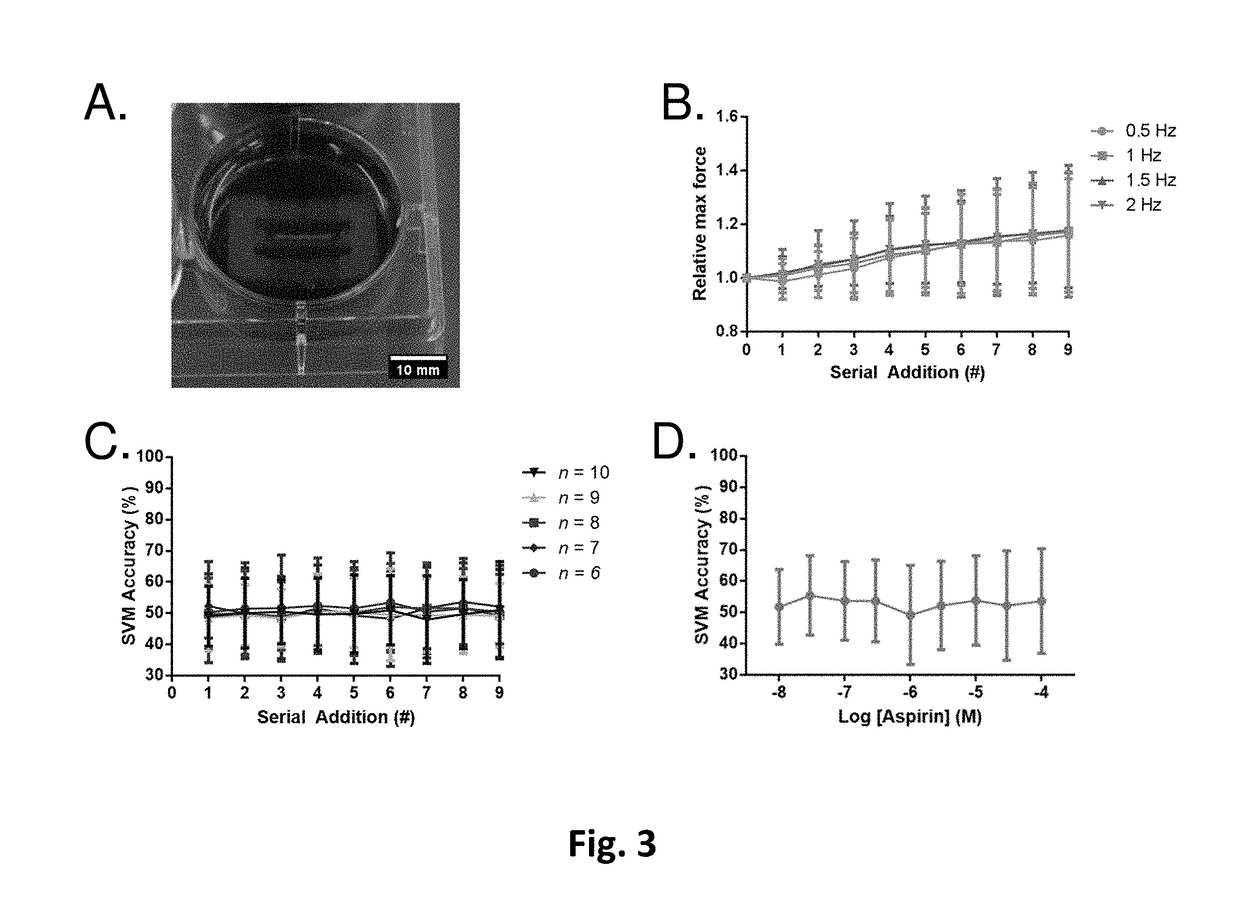Methods and apparatuses for prediction of mechanism of activity of compounds
a technology of compound activity and mechanism of action, applied in the field of methods and apparatuses for predicting the activity of compound, can solve the problems of difficult to draw definitive conclusions, risk of not detecting information that differentiates the behavior of control cms from those exposed to cardioactive compounds,
- Summary
- Abstract
- Description
- Claims
- Application Information
AI Technical Summary
Benefits of technology
Problems solved by technology
Method used
Image
Examples
example 1
[0144]hvCTS Formation
[0145]Human ventricular cardiomyocytes were differentiated from a hES2 stem cell line with a Wnt inhibitor-based protocol as previously described (Weng et al., 2014). Human ventricular cardiac tissue strips (hvCTS) were then formed by mixing cardiomyocytes (100 k cells per strip) at 14-16 days post differentiation with a solution of bovine collagen I (2 mg / mL), Matrigel (0.9 mg / mL), and human foreskin fibroblasts (100 k cells per strip) as previously described (Turnbull et al., 2014). The cell-matrix solution (100 uL per tissue strip) was injected into a custom PDMS force-sensing bioreactor device and placed in an incubator (37° C. and 5% CO2). Formed hvCTSs were fed DMEM with 10% new born calf serum, 1% penicillin-streptomycin and 0.1% amphotericin B. The PDMS device contains two flexible vertical end-posts to which the tissue anchors, causing the posts to deflect as the tissue beats. Contractile force measurements were captured with a high speed (100 fps) CCD ...
example 2
Drug Treatment
[0146]After 7-8 days post tissue formation, hvCTS were exposed to drugs for pharmacodynamic analysis. Flecainide, lisinopril, norepinephrine and ramipril were provided by Pfizer, while all other compounds were purchased form Sigma-Aldrich. Compounds were initially resuspended in DMSO and subsequently diluted in water for final concentrations composed of less than 0.1% (vol / vol) DMSO. The PDMS device containing the hvCTS was placed onto a heated stage (37° C.) under a dissecting microscope. Before either vehicle or drug addition, the media was replaced with DMEM containing high glucose (4.5 g / L) and HEPES without phenol red. Drug doses were added to a tissue in consecutively increasing manner up to 10 concentrations with 3 minutes in between measurements. Vehicle doses containing only water were applied similarly. A pulse stimulator (AMPI Master-9) connected to platinum wires electrically paced the hvCTS with a monophasic electric field of 5 V / cm with a 10 ms pulse dura...
example 3
Machine Learning
[0147]To establish the drug class model, we identified individual compounds that respectively represented our defined classes. The compounds and the corresponding tested concentrations are listed in Table 1. To determine which concentration of a chosen compound to add to the model, we first gauged each compound's level of cardioactivity by utilizing binary SVM (FIG. 10) (Lee et al., 2015). To normalize for the increasing variation seen in hvCTS contractile behavior during the later serial additions of the vehicle studies, the SVM was performed between each concentration of a compound and the vehicle data from the corresponding serial addition number in which the concentration was achieved (FIG. 2, A). Details of optimizing SVM classifiers are discussed in Example 6.
[0148]For multi-class classification, we then selected the compound concentration that met two criteria: 1) a binary SVM accuracy closest to 85% and 2) at least 6 of all screened tissue strips were still r...
PUM
 Login to View More
Login to View More Abstract
Description
Claims
Application Information
 Login to View More
Login to View More - R&D
- Intellectual Property
- Life Sciences
- Materials
- Tech Scout
- Unparalleled Data Quality
- Higher Quality Content
- 60% Fewer Hallucinations
Browse by: Latest US Patents, China's latest patents, Technical Efficacy Thesaurus, Application Domain, Technology Topic, Popular Technical Reports.
© 2025 PatSnap. All rights reserved.Legal|Privacy policy|Modern Slavery Act Transparency Statement|Sitemap|About US| Contact US: help@patsnap.com



